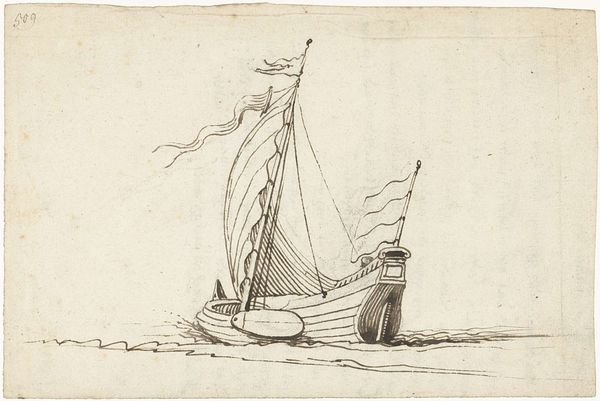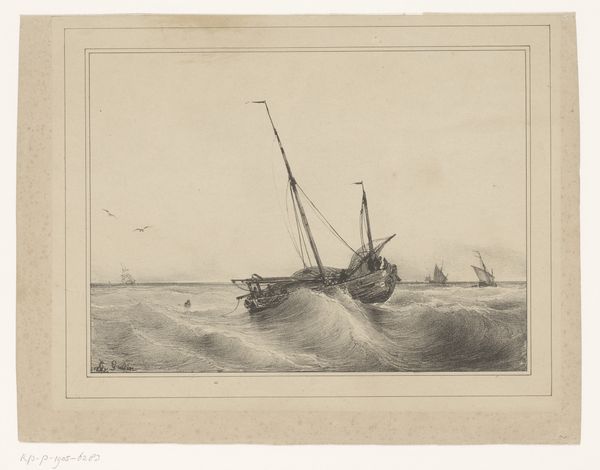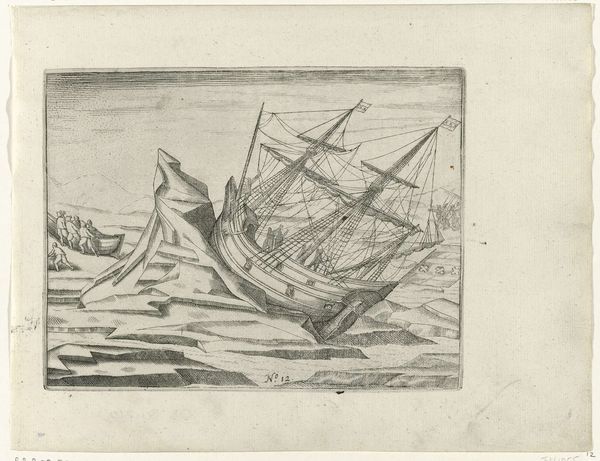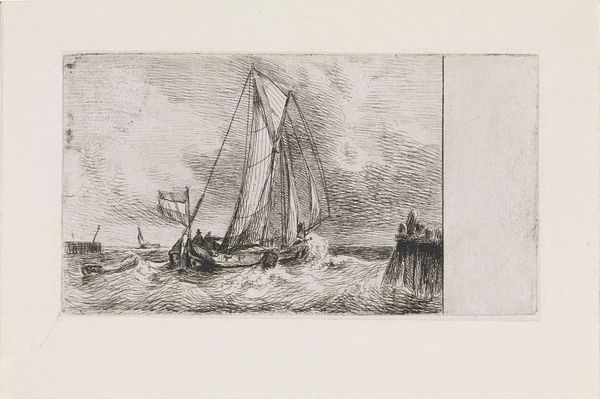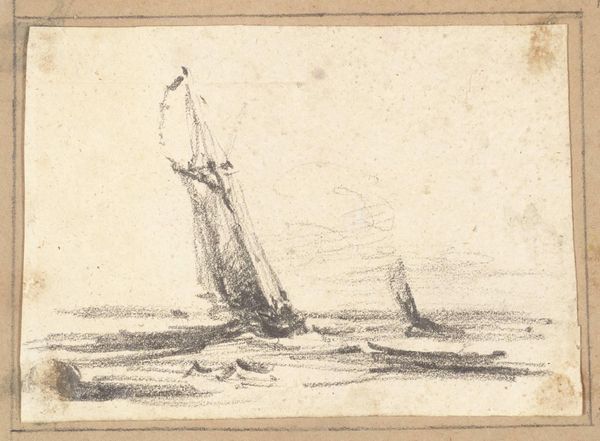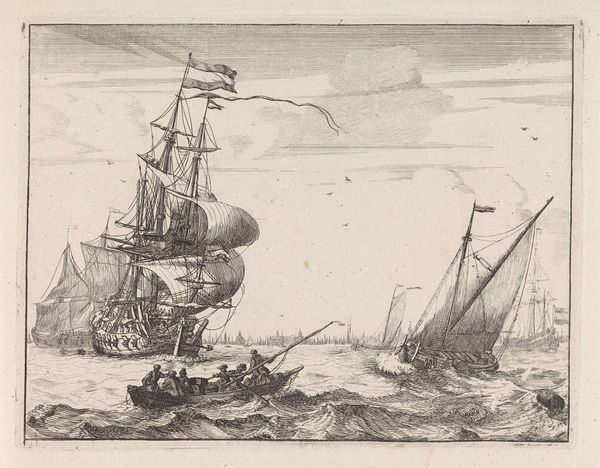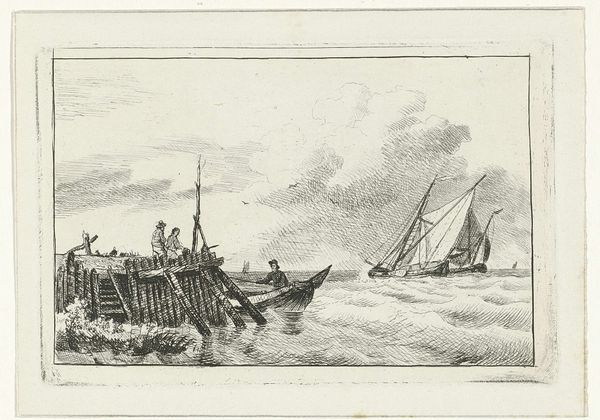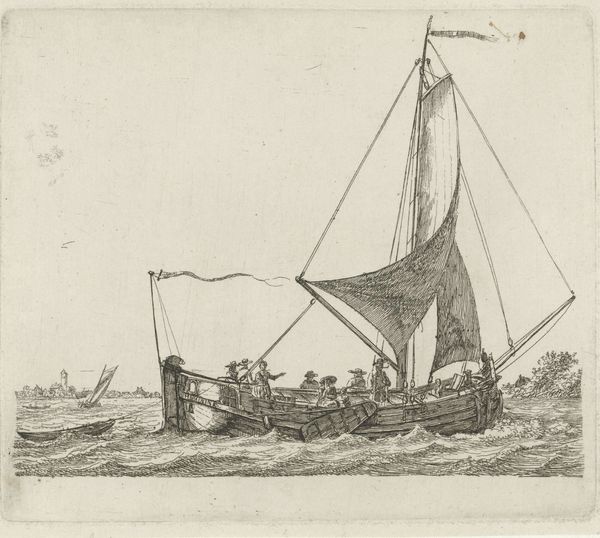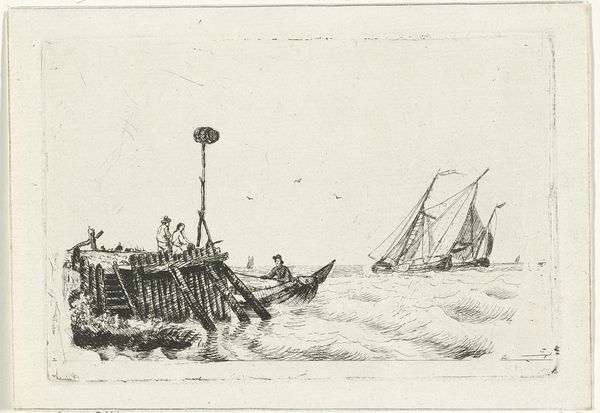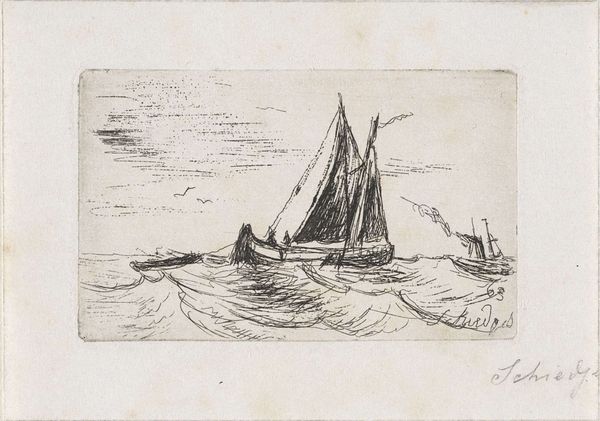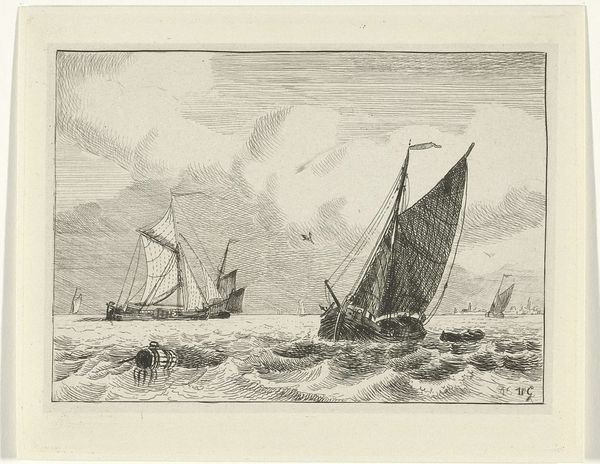
drawing, print, etching
#
drawing
# print
#
etching
#
landscape
#
line
#
realism
Dimensions: height 51 mm, width 81 mm
Copyright: Rijks Museum: Open Domain
Editor: So, this is “Ship on Waves,” made sometime between 1832 and 1880 by Willem Gruyter Jr. It’s a drawing and etching, giving it this fine, detailed quality. I'm really struck by the energy of the waves; they look so raw. What stands out to you in this work? Curator: For me, the etching medium is really the starting point. The accessibility of printmaking at this time allowed for broader distribution of imagery. Consider who was commissioning and buying these works, and the social structures that this trade enabled and reflected. Did the commercial availability influence Gruyter's choice of subject matter? Editor: That's a really interesting point. I hadn't considered the relationship between the technique and the market. The "realistic" depiction of this everyday scene may have helped broaden its audience? Curator: Precisely! The use of line etching is critical. Think about the labor involved: creating the plate, the repetitive printing process. These were commodities, and images that resonated with the rising merchant class and a growing art market. We should think about it also in dialogue with other printmakers working at the time. Does this challenge the status of more elaborate, commissioned paintings as a medium? Editor: That makes me see this etching as not just a depiction of a ship, but as a product of a particular economic and social moment. Curator: Exactly! And to think about how the very act of making and distributing art like this could challenge traditional boundaries between "high" art and craft. We get caught up in the 'image', and neglect to examine how its very method of production helped reframe culture! Editor: Wow, I will definitely look at etchings differently from now on. Thinking about the material and labor definitely changes my perception. Thanks.
Comments
No comments
Be the first to comment and join the conversation on the ultimate creative platform.

